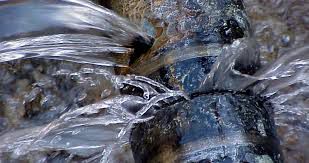Water Line Leak Services

Whether you have an obvious water leak or a high water bill with no idea where it could be rest assured when you call the leak inspectors you will get prompt, processional service.
We locate and repair all types of water line leaks.
- Large diameter underground water line leaks
- Water service line leaks
- Under slab water link leaks
- Water leaks in the wall
If it has to do with water we will first find it and make the proper repairs. Call now for immediate service.
Drip, Drip, Drip
Leaks from pipes, plumbing fixtures and fittings are a significant source of water waste for many households. Research has shown that the typical home can lose 2,000 to 20,000 gallons of water per year due to leaks. Some leaks are obvious, such as dripping faucets and leaking water heaters. Unfortunately, many leaks go undetected for years because the source of the leak is not visible.
Do you need to find leaks in your home? Use the helpful information below:
Whole House Meter Check for Leaks
Larger leaks or a combination of small leaks can often be detected by your water meter. Using your water meter you can perform a simple leak check with the following steps:
- Make sure all water is turned off inside and outside the home. This test must be performed when no automatic water equipment is used, such as irrigation controllers, clothes washers, dishwashers, etc.
- Record the reading of the water meter & wait 15 minutes. Be certain no one uses any water during this time.
- Record the reading of the meter again. If the meter has recorded water use during the test, it might be due to a leak. Verify that the water use is not due to small appliances such as water filters, water softeners, or whole house humidifiers.
- The meter test only verifies large leaks after the meter. Using this test you cannot verify that small leaks do not exist within the home. Even when leaks are detected, this test does not indicate the location of the leaks. Further investigation is needed to detect and locate all significant leaks.
Water Meter Leak Check
Main Water Supply Line Leaks (or Service Line)
There are sometimes leaks between the meter and the home (if in meter pit) or from street to meter, in the water supply line or water service line. These leaks are often difficult to detect because the supply pipe is usually buried at least 4 feet below the ground surface. Sometimes the leaking water will travel along the pipe, back to the meter. If the meter box contains water, and the water is not due to rain or irrigation run-off, this may indicate a leak in the supply line.
Another common exit point for the leaking water might be where the supply line rises above the ground and/or enters the house. If the soil is constantly damp at these locations this might indicate a leak. In cases of severe leaks, the water will seep up towards the ground surface, usually directly above the path of the underground pipe. Most often, leaks between the meter and the house are the responsibility of the homeowner; leaks from the meter or pipes leading from the main to the meter are the responsibility of the water utility. The water utility should be contacted before any attempt to repair the water supply pipe. If the utility deems the leak to be the responsibility of the homeowner, a professional plumber like Pipe Doctor should perform all repair work. This repair should never be attempted by a homeowner.
Faucet, Shower, and Tub Leaks
Faucet leaks are a common occurrence and usually simple to repair. A faucet dripping slowly at only one drop every two seconds will waste more than 1,000 gallons per year. The repairs necessary to stop the leak depends on the type of faucet, and there are four basic types found in most homes: compression valve, ball types, cartridge types, and ceramic discs. Each type of faucet has unique methods of repair. If you are accustomed to using tools and making minor home repairs you should be able to repair minor faucet leaks.
Toilet Leaks
Toilets are one the most common sources of leaks in the home, and usually go unnoticed because the leaks are often silent and out of view. Several research studies have found 20% to 35% of all residential toilets leak to some degree. Large toilet leaks can be detected when the valve constantly emits a hissing or gurgling sound when the toilet is not in use.
To begin looking for leaks remove the tank lid and inspect the flush mechanisms. The water level in the tank should be no higher than 1 inch below the top of the overflow tube. If the water level is to the very top of the overflow tube, water is slowly leaking into the overflow tube and down the drain. The problem has one of three causes:
- The water level is adjusted too high
- The float is damaged and not shutting off the refill valve
- The refill valve (ball-cock assembly) is worn and needs replacement
Inspect for Leaks
Replace a Flapper Valve
You can perform a simple dye test to check for leaks in the flapper valve. Place dye tablets or a couple drops of food coloring into the tank water to give the water color. If the colored water appears in the bowl within 15 minutes, there is a leak in the flapper valve. Leaks occur when the flapper valve does not create a watertight seal. The seal can be compromised due to several reasons:
- The chain snagging, not allowing the flapper to drop completely onto the valve seat;
- The valve seat is worn; or
- The flapper is worn or warped. A worn flapper is the most common cause by far, and can be easily replaced.





